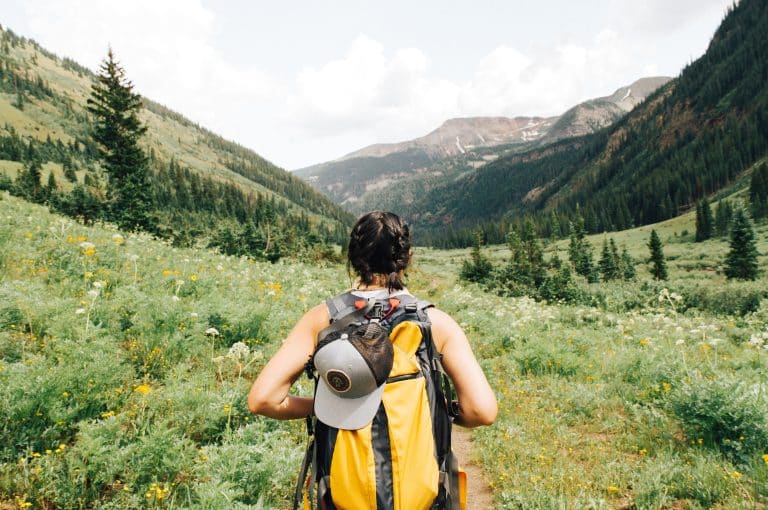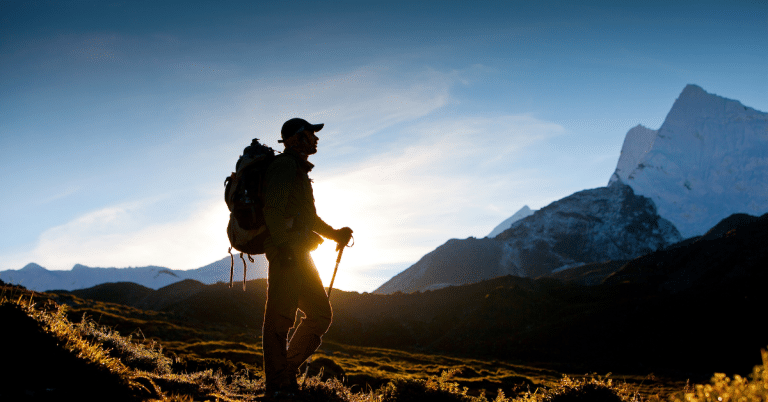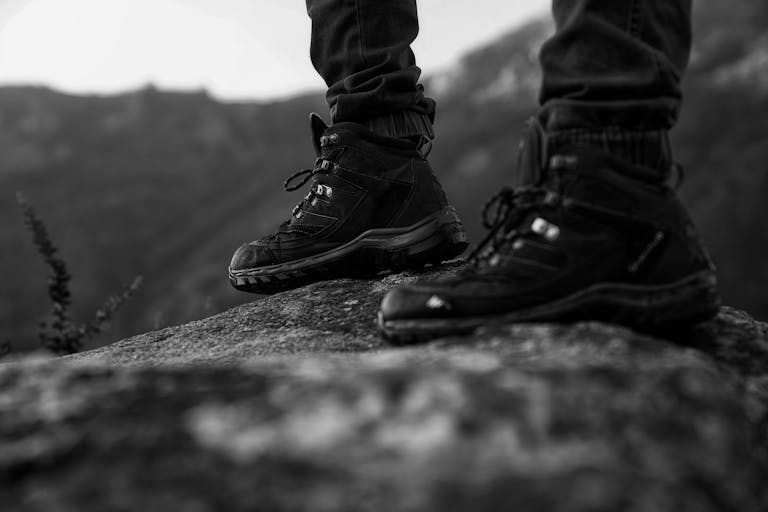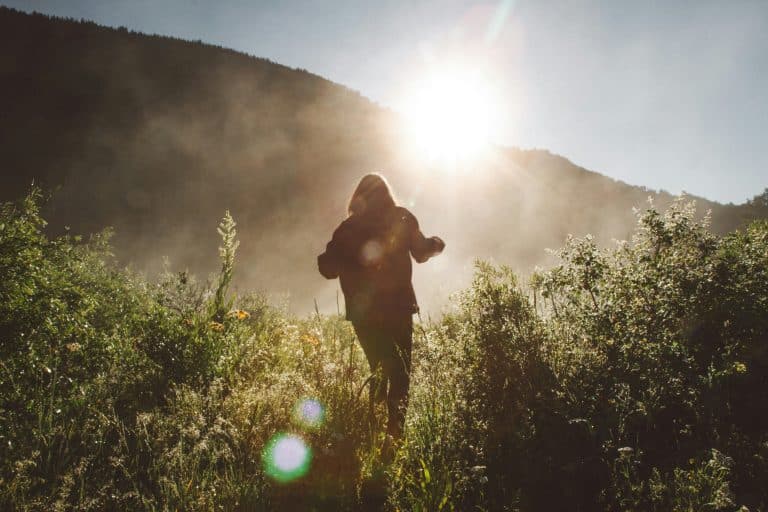What To Bring Hiking: Hiking Essentials List
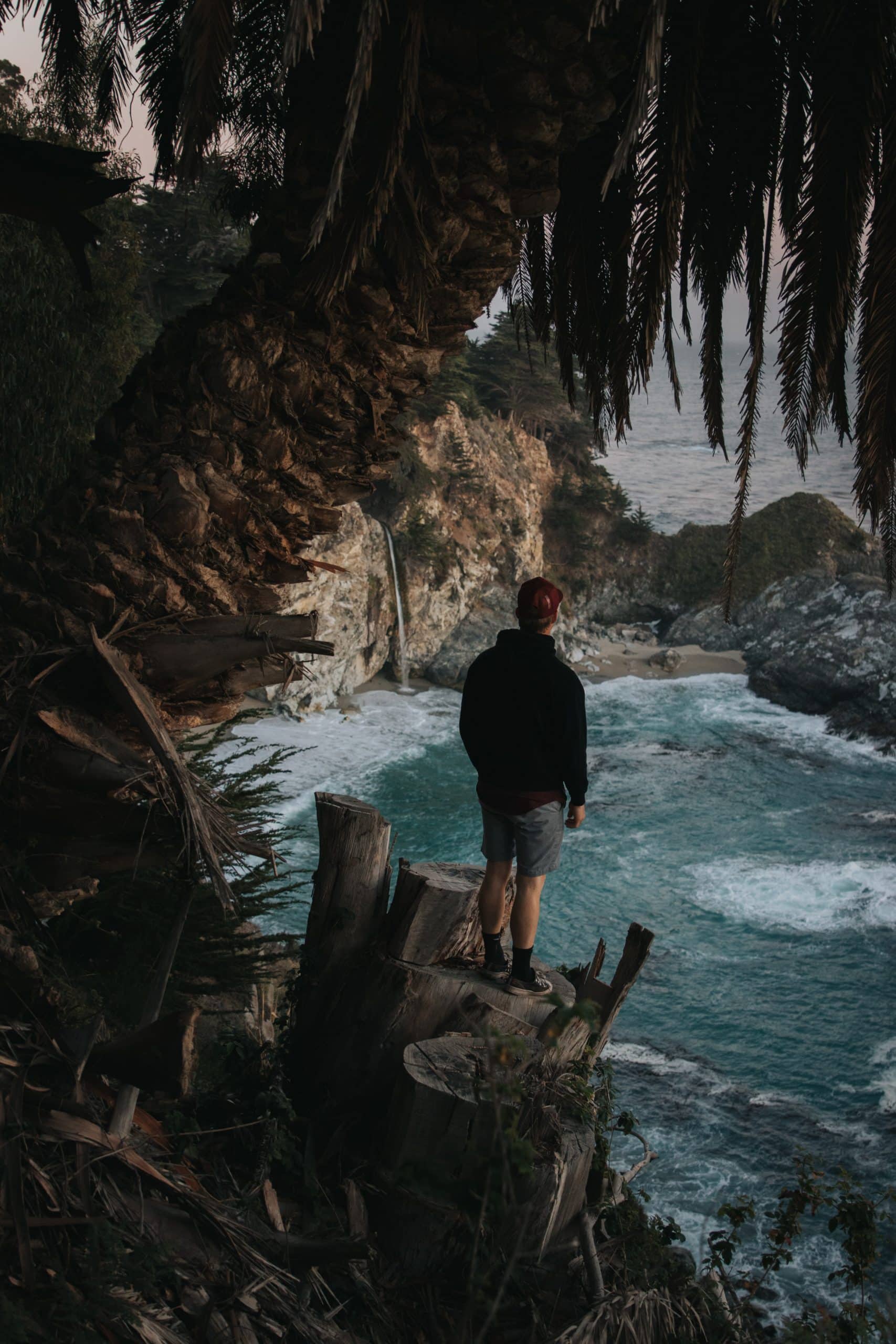
When you are out to explore the beautiful mountains or simply hike on more beginner trails, you need to have several essentials to stay safe. You may want to bring what you need for your comfort and for those unpredictable situations that you might come across during a hike.
Many beautiful things going on in nature, but many things can go wrong too, and you have to be ready for everything.
The following essentials should be part of your hiking gear regardless of the type of hiking you want to do, whether it is a few hours if hiking is a hobby, a day, or several days.
The Most Important Hiking Essentials
These essentials cover several aspects of your hiking, including safety, nutrition, and comfort. Feel free to adapt them to your options and hiking trip, particularly if you are looking to enjoy some of the best things to do in Death Valley.
Hiking backpack
Clothing
Water
Food
Sun protection
GPS
Headlamp
First Aid kit
Multitool/ knife
Maps
Sleeping arrangements for overnight hiking
Firestarter
Trash bag
When Should I Carry These Essentials?
You want to consider packing all the items on this list every time you go on a hike. However, if you are going for an easy trip, on a trail you are familiar with, you might need fewer items as you enjoy one of the best outdoor hobbies. Consequentially, if you go on a more difficult hiking trip that might last more than one day, you want to bring all these essentials!
1. Hiking backpack
Choosing the right hiking backpack is mandatory for all your hiking adventures. This might not be easy, especially if you are a beginner in terms of hiking.
The length of your hike will determine the size of your backpack. If you are planning to go on a day trip, you will need a backpack with a capacity of between two and six gallons.
Consequently, for a hike of more than a day, you will need a bigger backpack with a capacity of six to ten gallons and even more if you are planning to stay several days.
Your backpack should also be waterproof in case some rain catches you during your hike. You don’t want your belongings and food to get wet. Also, consider a backpack with enough compartments and pockets so you can access all you need easily. You want to separate your clothes from your food and chemicals. And at the same time, you want to be able to access certain items fast, such as the water bottle or the phone and camera.
Each hiker has different needs in this regard but having the backpack compartmentalized is crucial for its functionality!
An example of a popular backpack that comes in various sizes, with enough pockets and lightweight material is the Outlander backpack. Plus, you can find it at a budget-friendly price too, and it is likely to last you a long time. Patagonia also makes some great backpacks too. Yeah, using a great Patagonia backpack is one of the many lessons I learned backpacking.
2. Clothing
Your travel clothes should be adapted to the weather conditions but also the length of your hiking trip. They should be of breathable materials, quick-dry and comfortable.
You will need an insulated jacket for chilly nights or mornings, and anytime you get cold during your hike.
Base layers are also important as they will help you maintain a comfortable body temperature. A shirt that dries quickly and a long sleeve sun shirt will turn out to be very useful, especially if the weather temperatures fluctuate along your hike.
If you go hiking at high altitudes, in particular, a wind jacket can be exactly what you need. Some windbreakers are also rain jackets so you can get two issues covered by one outfit item.
Also, the pants or shorts you wear should dry fast and be breathable. You can find convertible pants that become shorts by unzipping the bottom half and therefore, be more prepared for any circumstances.
Footwear, however, is one of the crucial parts of your outfit. You need them to be comfortable yet resistant to weather conditions and the entire hiking experience. You can choose to wear hiking boots or shoes as long as they have a thick sole and all the padding you need for your comfort. Waterproof footwear is also an important feature even if you don’t get rained on because you never know when you step into a puddle or you have to cross a more watery area. It might take you a while to find the perfect hiking footwear for you as each person has a different level of comfort, and you don’t want blisters or wounds on your feet when you are exploring nature!
3. Water
Water is a must-have every time you are hiking. Dehydration is one of the highest risks as it happens fast and escalates even faster. You might need half a liter of water (16 ounces) every 30 minutes. If you are hiking on hot, summer days, you might also need more than that. That’s why one of my hot weather hiking tips is to always bring plenty of water.
But you will be able to bring so much water with you, and if you are going on a long hike, you might rely on natural water sources to stay hydrated. But even in such a scenario, you will need to filter the water you find in nature, to be sure it is safe to drink.
Investing in a water filter that is made especially for hiking can get this worry off your head. These portable filters are easy to use and fairly affordable, and they allow you to filter any water you find along your trail. LifeStraw is a great example of such a personal water filter.
If you are not sure that you will be able to have all the water supply you need, you want to bring two bottles with you and portion your intake. You will not get as much water as you should but by drinking less of it, you will make it last longer and still keep dehydration risks away.
4. Food
Food is just as important as water. The last thing you want is to hike when you are starving. And with all the effort involved in your hike, you will get hungry for sure. You might be tempted to pack several sandwiches, and that’s it. While you definitely can bring a couple of your favorite sandwiches, you also want to bring snacks that last a long time at any temperature.
Protein bars or cereal bars for instance are a great solution when you put together your hiking menu. They will give you energy without taking a toll on your digestive system.
When you decide what food you bring and how much of it, you want to take into account the possibility of prolonging your trip. Maybe you get lost, or maybe the weather doesn’t allow you to finish your trail in time. At times there are emergencies that appear out of nowhere, and they keep you outdoors more than you expected. So, always bring extra food just in case you find yourself stuck in such a scenario.
5. Sun protection
When you think hiking, you think sun exposure. You simply can’t have one without the other. Even if you are not under constant sun exposure, we know that the UV rays tend to be stronger in the mountains, and even the wind can accelerate their effect.
You will have to pack your sunglasses, hat, sun-protective clothing, and sunscreen so you make sure you have the right gear to avoid heatstroke or sunburns. If you hike during winter, know that snow-blindness can be just as bad as sunburns. So bring all the sun protection gear you need and use it during your hiking trip.
When you choose your hiking sunglasses, you should have two things in mind: they need to block 100% of UVA and UVB, and they need to be polarized. Polarized lenses reduce glare, which is very important if you hike around snow or water.
Similarly, your sunscreen should be minimum of SPF 15, but ideally, it should offer you an SPF 30 protection. Reapply your sunscreen hourly, and if you are directly exposed to sun rays, even every 30 minutes. You also may want to wear one of the best sunhats for travel to help protect your face from harsh UV rays.
As for the clothing, you will also need to look for materials that block UVA and UVB. Regular clothes have a UPF of 5, but if you check out hiking clothes you will notice that they come with a UPF of 50. Try to choose breathable materials and long sleeves as much as possible. With such clothes, you will avoid sunburns, and you will not get too hot during your hike either.
6. GPS and satellite messenger
Using a GPS can offer you comfort during your hike but it can also be a lifesaver. On one hand, you will most likely save time finding your way, and you will not get lost in the middle of anywhere if you use a GPS. But on the other hand, if you need an emergency rescue, such a tool could help you give the exact coordinates of your location to the rescuers. A satellite messenger is even better when it is a life or death situation because it will alert the rescuers and give them your coordinates faster than you would. All you have to do is use the SOS function of your satellite messenger.
The most accessible way to use a GPS is by downloading such an app on your smartphone. Gaia GPS, AllTrails, or even the more popular Google Maps, can all be great options. If you are hiking with other people, each one of you should have your GPS. You never know when one gets lost from the group or when your GPS is failing, so it is wiser to have a backup.
When it comes to using a satellite messenger, you will find some interesting options on the market such as this Spot X type. These devices are great for texting anyone even if you are not under cellular coverage. The SOS button is there to keep you connected as you need with rescue teams and stations in the area.
To conserve your phone’s power, set it to Airplane mode and turn on battery-saving settings. Also, consider using a waterproof case for your phone, and store it in a secure place in your backpack, so you don’t lose it.
7. Headlamp
You might think that you only have to bring a headlamp if you are planning on spending the night outside. But we recommend you to have a headlamp in your backpack at all times when you go hiking. You never know when you get injured and your entire timeline changes since you will be slowed down. Or when you are lost, and you spend hours trying to figure out your way to the main path. In such situations, a headlamp can make all the difference!
Make sure your headlamp has batteries that are fully charged, and bring an extra set just in case. GearLight LED Head Lamp is one of the best headlamps on the market, but you can find plenty of models. Accidents can happen, and your headlamp could get turned on in your backpack, which is why you might have to use your phone. But using your smartphone should be your last option because most likely, this will be your GPS host, and its battery is just as precious.
8. First Aid kit
First aid kits are necessary for any type of trip, and hiking is no exception. When you are out in the wild, and you get injured, you need to act fast and try to restore your condition as well as possible. You can’t do that without a basic first aid kit.
You will find a lot of first aid kits created especially for hiking. Many of them have a waterproof case, which is an important quality to consider in such a product. Once you purchase such a kit, is important to open it and get familiar with the items inside. If you don’t know how to use it, your first aid kit will not serve you much.
In a nutshell, your aid kit should include an antibiotic ointment, band-aids, and blister band-aids as well as medical tape, ibuprofen, Imodium, a type of basic steroid, an antihistamine, tweezers, and optional a wilderness whistle. Different products might come with more or fewer items but consider that you will be carrying it in your backpack the whole time, so you can’t bring a big size first aid kit. The EMT Pouch first aid kit is a good option as it has everything you need, and it comes in a resistant case.
9. Multitool/ knife
A multitool or a knife can turn out to be very useful when you are in the middle of nature. You can use a multitool to repair your gear in case it gets damaged or to cut a branch that won’t allow you to move forward. Cutting ropes and cords can also be a need during hiking, and a knife will be the only thing to help you.
You might also need to defend yourself, case in which your knife can be your only weapon. All in all, it is essential to bring such a tool to your hiking trip to stay on top of any situation.
Note that hiking knives are not the same as your regular kitchen knives. Many of these models will come with a folding mechanism and a secure case so you can store them in your backpack and not take the risk of accidentally injuring yourself. A good example is the Smith & Wesson which is very popular among hikers and comes with all the features you need. It comes in a small size and has a pocket clip system that is safe while it allows you fast access to it.
10. Maps
You might think that maps can easily replace your GPS but even if they serve the same purpose, they will not serve it in the same way. First of all, a map can be a great backup in case your GPS is not working but you still need directions. So, if not for anything else, this should be reason enough to pack a map of the area where you go hiking at, in your backpack.
While a map can be useful, you still need to have basic orienteering knowledge and know-how to make the most of it. And to use it the right way, you will need a compass as well, to orientate your map in the wrong direction. Finding your direction can be particularly difficult in the wild as everything might look similar. So, a compass is a must-have to be able to make your map functional.
11. Sleeping arrangements for overnight hiking
Your sleeping arrangements will depend on how long you are planning to go hiking. If it is only a day trip, you will not need such supplies. But if you are planning to spend the night in nature you will need a tent and preferably a sleeping bag, to name the minimum. You can find different models of hiking tents for backpacking that are lightweight and very compact so you can carry them with no hassle. When you purchase such a tent you want to consider the number of people that will sleep in it as well as the material. Best tents are waterproof or water repellent, and they can pay off if the weather is not on your side. Clostnature tents are some of the best choices as they have all the features you might be interested in, and they come in different sizes.
However, there is such thing as an emergency shelter, which can happen if you get lost or you are not able to end your trip before sunset. In this less than pleasant scenario, you can get by with a warm blanket, and a foil emergency bivvy can save you and keep you warm for the night. They are compact and easy to bring with you as they are lightweight items too. The option for emergency shelter should be in your backpack even if you just plan a day trip, just so you can be ready for the unexpected situations you might come across.
12. Firestarter
If you are planning to stay in nature for a few days, knowing how to start and keep a fire going is one of the most precious skills to have. Fire can keep you warm during the cold evenings, and you can also use it as a signal for the rescue stations in case you need help.
But to start a fire you will need certain supplies such as a lighter or waterproof survival matches, tinder, and, of course, wood. If you can’t put these supplies together, but you still need to cover the need for heat, a backpacking stove can serve you decently. Odoland offers models of backpack stoves that you can consider as they are lightweight and very functional.
Either way, for hiking trips that take several days, you need to be prepared to create a source of heat for your comfort and even for your survival. Needless to say that a backpacking stove will not serve you as a rescue signal, but it can substitute your fire, and heat source.
13. A Trash Bag
Respecting nature is everyone’s duty, and for hikers, this tends to be even more important. Bringing a trash bag with you when you go on a trail should be one of the essentials as well. You don’t want to discard the waste along the trail, and in general, you want to keep your trash to a minimum because carrying it with you is no pleasure either.
All you need to stay on top of this problem is a ziplock bag that is compact and easy to put in one of your backpack’s pockets. That way you can seal the bag should you need to use it, and it will be isolated from the rest of your backpack.
Leaving trash in nature contaminates not only the plants but also the atmosphere and the quality of the air. Not to mention that a lot of trash can be toxic or hazardous for animals.
Extra Accessories To Have When You Go Hiking
As a bonus, we added some interesting accessories that could make your hiking trip even more pleasant.
An extra pair of dry socks, because you never know when the socks that you are wearing get wet. And there is no pleasure in hiking with wet socks!
The ultralight towel can serve you as a sweat towel or a dry-off towel if you find a place to swim at. Make sure that it is easy to pack, and it doesn’t take much of your space though, since this is not one of the essentials.
A reward snack that you can enjoy at the end of your hike. Choose one of your favorite snacks and plan to eat it when you finished your hiking trip or when you reached an important milestone. It is a fun trick to stay motivated when you get tired and still have an extra snack in your backpack!
Waterproof pocket notebooks. These notebooks are fun to have for those unique thoughts you might realize in the middle of nature. Plus, being waterproof you don’t have to worry about humidity or even rain as the paper will resist such conditions.
A Home Portable Cutlery Set with Case can also be very nice to have if you want to enjoy your meals more comfortably. These utensils come in a case, so you will not have to worry about storage, and if you can’t wash them just place them in the case and back in your backpack.
If you are planning for a few days in nature, and On-The-Go Hammock can take your experience to a new level. Every time you find a beautiful spot and you want to take a break, simply set up your hammock, and you are in heaven!
A hydrating mist spray can help you feel refreshed with just two puffs! There are many products on the market to choose from. We recommend getting such a spray in a small bottle since it will last you for a few days if you use it in moderation.
Hiking is one of the best experiences you can have, but it is mandatory to put your safety and comfort first so you can make the most out of it. Nature can throw at you plenty of unpredictable situations, and you want to do your best to be ready to face them. Adapt the list in this guide to your personal preferences and needs but keep in mind that the essentials should always be present in your backpack in one form or another.
